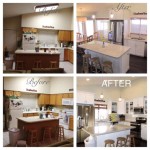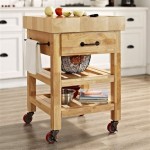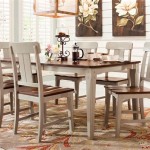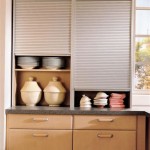Ideas for Recycling Bins in the Kitchen
Recycling is an essential element of sustainable living, and incorporating recycling practices in the kitchen is a great way to reduce waste and contribute to a greener environment. A well-designed recycling system makes it convenient to separate recyclables from trash. Here are some ideas for recycling bins in your kitchen that can help you streamline the process and make recycling a seamless part of your daily routine.
1. Double-Bin System
A classic and simple solution is a double-bin system, with one bin for general trash and the other for recyclables. This setup is ideal for smaller kitchens as it allows for easy segregation without taking up too much space. Select bins of suitable size and ensure that the recycling bin is easily accessible and clearly labeled. Consider color-coding the bins with blue for recycling and black for trash, for instance, to reinforce the separation process.
2. Multi-Bin System
For those who recycle various materials, a multi-bin system is practical. This system allows for the separation of different recyclable materials, such as paper, plastic, glass, and metal. Each bin should be clearly labeled with the appropriate recycling symbol or material type. This system promotes efficient recycling by ensuring that each item is placed in the correct bin.
There are several ways to implement a multi-bin system:
- Separate, dedicated containers: This approach involves using separate bins for each recyclable material, providing clear separation and organization. This works well in larger kitchens with ample space.
- Multi-compartment bins: A single bin with multiple compartments can be a space-saving option. Each compartment can be dedicated to a different recyclable material, allowing for efficient organization within a single container.
- Stackable bins: Stacking bins with removable liners can be a great solution for limited countertop space. You can stack the bins vertically and pull out individual bins as needed.
3. Under-Sink Recycling Bins
Utilizing under-sink space is a clever strategy for kitchen recycling. Under-sink bins can be pull-out drawers or slide-out units, making it easy to access and manage recyclables without cluttering the countertop. These bins are typically available in various sizes and can be customized to fit the specific dimensions of your sink area. When choosing under-sink bins, ensure that they are easy to load and unload and that the liners are readily available.
4. Pull-Out Drawer Recycling Systems
Pull-out drawer recycling systems offer a streamlined and efficient way to manage recyclables in the kitchen. These systems seamlessly integrate into your cabinetry, providing hidden storage for your recycling bins. A pull-out drawer can accommodate multiple bins, each dedicated to a specific recyclable material. This setup keeps recyclables neatly organized and concealed while maximizing space and functionality.
5. Countertop Recycling Bins
For convenience, countertop recycling bins are a good option. These bins come in various sizes and designs. Some have lids for odor control and aesthetics, while others feature handles for easy movement. When selecting countertop recycling bins, consider the size and capacity that best suits your needs and the available countertop space. These bins are often available in various materials, including stainless steel, plastic, or bamboo, to complement your kitchen décor. The choice depends on your preference and the overall aesthetic of your space.
6. Compost Bins
In addition to traditional recycling, consider adding a compost bin to your kitchen for food scraps and yard waste. This will further reduce your overall waste output. Compost bins can sit on the countertop or be placed under the sink. Choose a container that is large enough to hold your compostable materials and has a tight seal to prevent odor. You can use a dedicated compost bin or a single bin with a separate compartment for compost.
7. Labels and Signage
Clear labels and signage play a crucial role in successful kitchen recycling. Clearly label each recycling bin with the type of materials accepted, including recycling symbols and brief instructions. This will ensure that everyone in the household understands what goes where. For added clarity, consider using color-coded labels or bins to differentiate between different types of recyclables.
8. Utilize Existing Storage
To avoid purchasing additional containers, utilize existing storage solutions. For instance, repurpose a drawer in your cabinets for recycling. You can place a trash bag inside and designate it as a recycling bin. Consider using a small metal trash bin on your countertop, or utilize storage containers or baskets.
9. Make it a Habit
The key to successful kitchen recycling is consistency. Make it a habit to sort your recyclables as you generate them throughout the day. This will help to prevent the buildup of waste and encourage a more sustainable lifestyle.
By implementing these ideas for recycling bins in your kitchen, you can create a convenient and efficient system that encourages responsible waste management and makes a positive impact on the environment.

Two Large White Bins Next To A Kitchen Counter Are Labeled For Recycling Recyclingtips Diy Baskets

10 Stylish Diy Recycling Bin Ideas Projects Ohmeohmy Blog

Ideas For Home Recycling Bin And Containers Where To Place Them

Kitchen Design Idea Hide Pull Out Trash Bins In Your Cabinetry

Recycling Bin 2paws Designs

How To Hide The Trash Can Storage Kitchen Organization Ideas Trashcanstoragekitchenorga Recycling Bins Cabinet

Roundup 8 Clever Diy Ways To Organize Your Recycling Curbly

Products

10 Clever Tricks To Hide Rubbish In The Kitchen Houzz Au

Kitchen Hidden Recycling Bins Design Ideas








